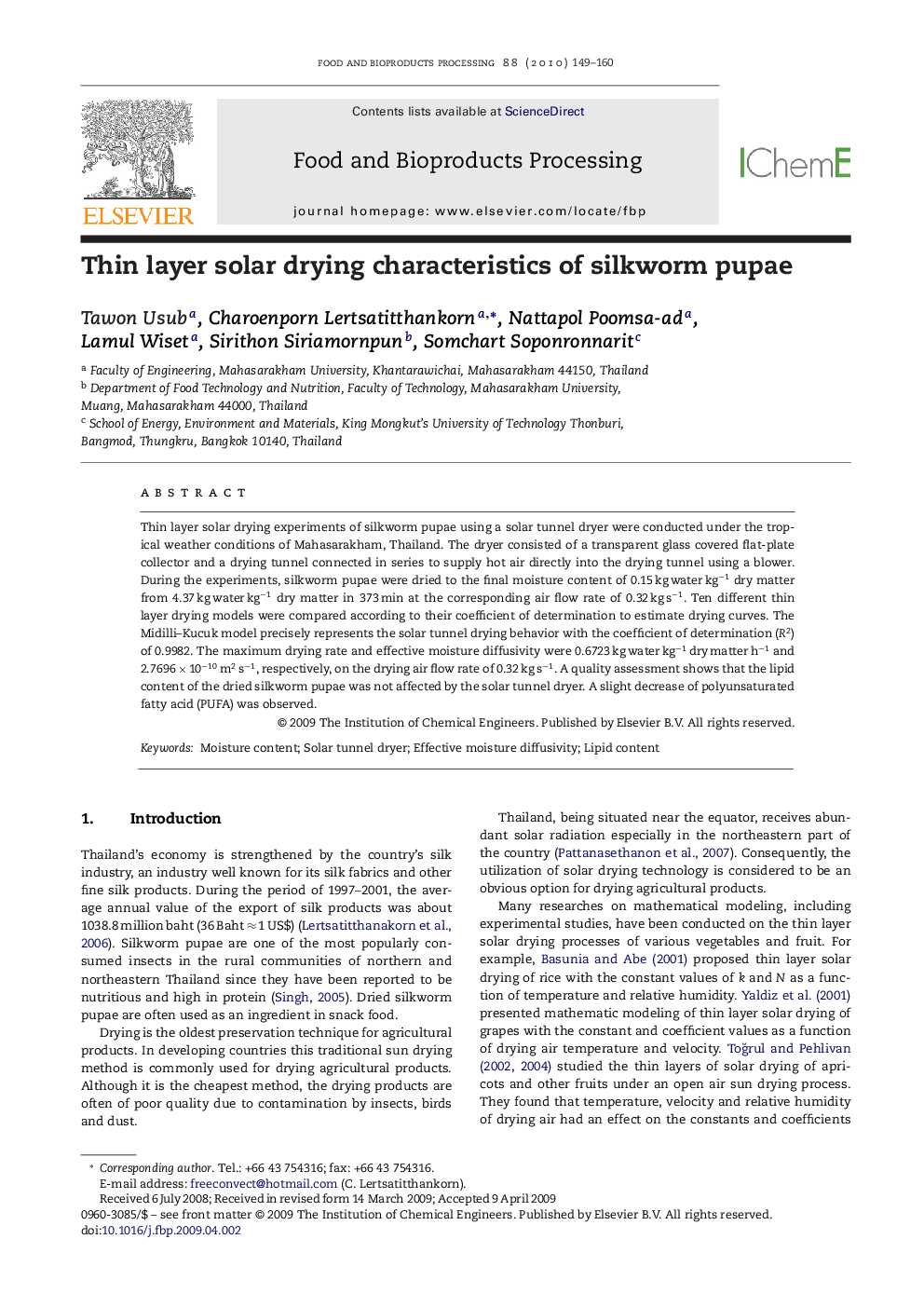| Article ID | Journal | Published Year | Pages | File Type |
|---|---|---|---|---|
| 19529 | Food and Bioproducts Processing | 2010 | 12 Pages |
Thin layer solar drying experiments of silkworm pupae using a solar tunnel dryer were conducted under the tropical weather conditions of Mahasarakham, Thailand. The dryer consisted of a transparent glass covered flat-plate collector and a drying tunnel connected in series to supply hot air directly into the drying tunnel using a blower. During the experiments, silkworm pupae were dried to the final moisture content of 0.15 kg water kg−1 dry matter from 4.37 kg water kg−1 dry matter in 373 min at the corresponding air flow rate of 0.32 kg s−1. Ten different thin layer drying models were compared according to their coefficient of determination to estimate drying curves. The Midilli–Kucuk model precisely represents the solar tunnel drying behavior with the coefficient of determination (R2) of 0.9982. The maximum drying rate and effective moisture diffusivity were 0.6723 kg water kg−1 dry matter h−1 and 2.7696 × 10−10 m2 s−1, respectively, on the drying air flow rate of 0.32 kg s−1. A quality assessment shows that the lipid content of the dried silkworm pupae was not affected by the solar tunnel dryer. A slight decrease of polyunsaturated fatty acid (PUFA) was observed.
